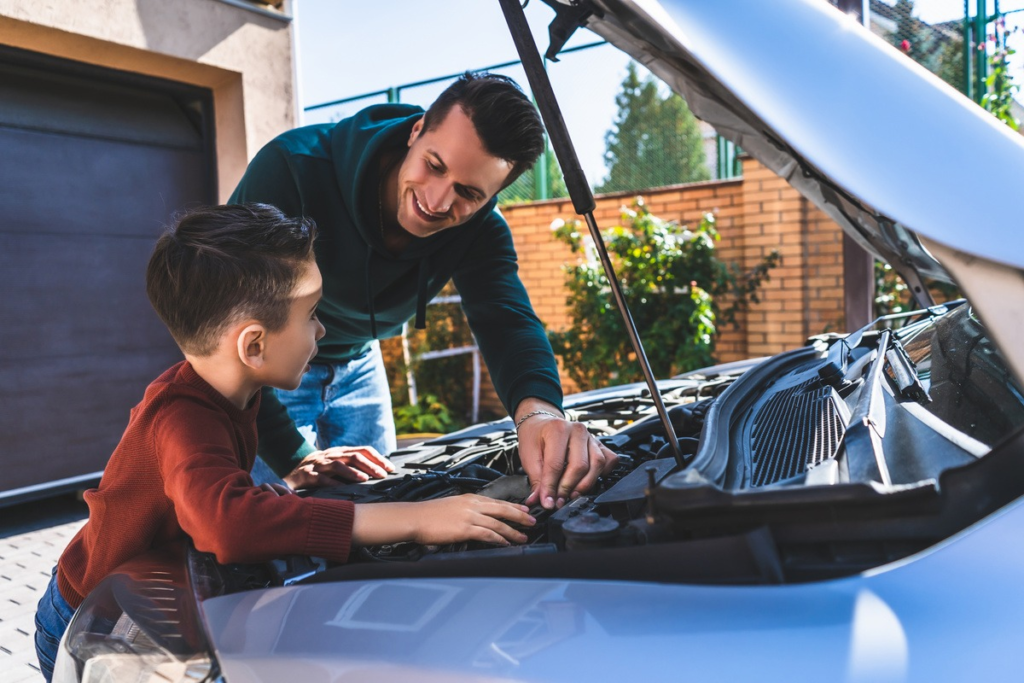
Taking care of your car through regular maintenance not only ensures its longevity but also saves you money on costly repairs over time. While some tasks require professional expertise, many routine maintenance activities can be performed at home with basic tools and a little know-how. Understanding what you can safely do yourself and when it’s best to consult a professional mechanic can help you keep your vehicle in optimal condition. Here’s a guide to DIY car maintenance and when to seek professional assistance:

DIY Car Maintenance Tasks:
- Oil and Filter Change:
Changing your engine oil and oil filter is one of the most basic yet essential DIY maintenance tasks. Regular oil changes (every 3,000 to 5,000 miles depending on your vehicle and oil type) help lubricate engine components and prevent wear. This task requires a wrench, oil filter wrench, new oil, and an oil pan for drainage. - Air Filter Replacement:
The air filter prevents dirt and debris from entering your engine. Check your owner’s manual for replacement intervals (typically every 15,000 to 30,000 miles) and replace it as needed. This task usually requires only basic tools and a new air filter. - Battery Maintenance:
Keeping your car battery terminals clean and free of corrosion can help extend its lifespan. You can clean terminals using a mixture of baking soda and water, a wire brush, and apply terminal grease to prevent corrosion. - Replacing Wiper Blades:
Worn wiper blades can reduce visibility in adverse weather conditions. Replace them when they no longer effectively clear your windshield. This task is straightforward and requires new wiper blades. - Checking and Topping Fluids:
Regularly check fluid levels such as coolant, brake fluid, transmission fluid, and windshield washer fluid. Top up fluids as needed according to manufacturer recommendations. - Replacing Lights:
Burnt-out headlights, taillights, or indicators can compromise safety. Replace bulbs as needed using your vehicle’s manual as a guide.
When to See a Professional:

- Complex Repairs:
Major engine or transmission repairs, electrical system diagnostics, and complex mechanical issues should be handled by a qualified mechanic. Attempting these repairs without proper knowledge and tools can lead to further damage and safety hazards. - Advanced Diagnostics:
If your vehicle’s onboard diagnostic system (OBD-II) indicates a problem (e.g., check engine light), a professional mechanic can perform diagnostic tests using specialized equipment to identify the issue accurately. - Brake System Maintenance:
Brake inspections, rotor resurfacing or replacement, and brake fluid flushes require technical knowledge and specialized tools. It’s crucial to maintain the braking system’s integrity for safe driving. - Suspension and Alignment:
Issues with suspension components, wheel alignment, or tire balancing should be addressed by a professional to ensure proper handling and tire wear. - Electrical System Repairs:
Problems with the car’s electrical system, including wiring, battery issues, and complex electronic components, are best handled by a qualified technician who understands automotive electrical systems.
Benefits of DIY Maintenance:
- Cost Savings: Performing basic maintenance tasks yourself can save money on labor costs.
- Convenience: You can schedule maintenance at your convenience without waiting for an appointment.
- Learning Experience: DIY maintenance helps you understand your vehicle better and feel more confident about basic repairs.
Conclusion:
DIY car maintenance can be rewarding and cost-effective, but it’s essential to know your limits and when to seek professional help. By staying proactive with routine maintenance and addressing issues promptly, you can keep your vehicle running smoothly and avoid unexpected breakdowns on the road. Whether you’re changing oil or replacing wiper blades, regular maintenance helps ensure your car stays in optimal condition for years to come.






